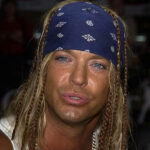TO: CLARK MATTHEWS FROM: STEVE BEATTY IN MINNEAPOLIS DATE: 2-29-92
CLARK – I did a little more research re: “Yipes, Stripes!” in OUR money….
Here’s what I’ve got so far:
The Federal Reserve BBS (known as Kimberely!) here in Minneapolis
at 612-340-2489 (2400-MNP5) has a file called SECURITY.MON that
discusses the polyester stripe!
I’ve excerpted the appropriate part below, with ——dotted lines——-
surrounding the pertinent info.
This information has been publicly available since July 25, 1991 –
so what’s the REAL story?
Is this SMOKE? or is there a FIRE ??
73, Steve
From the Federal Reserve “Kimberely” BBS in Minneapolis:
**************************************************************************
YOUR MONEY MATTERS …
A DESIGN THAT ENDURES
———————
United States currency is recognized and valued by people everywhere. Its
traditional design represents the most widely held currency in the world.
Although there have been changes from time to time, the basic design has
endured since the early 1900s.
For example, during that time the Department of the Treasury exchanged
heavy silver dollars for Silver Certificates with a design similar to
today’s currency. National banks also used much the same design to issue
National Bank Notes.
The Federal Reserve System, established by Congress in 1913, issues Federal
Reserve Notes through its banks and branches. Although the notes’ backs
varied throughout the years, the faces represented the familiar design. In
1929, the notes were made smaller, and uniform designs for each
denomination were adopted. The last significant change to the nation’s
paper money was in 1957 when the phrase “In God We Trust” was added.
KEEPING IT SAVE
—————
The U.S. dollar, with its universal acceptability and trusted design, is
also the most counterfeited currency in the world. Even so, counterfeiting-
one of the oldest crimes in history–has been managed successfully since
1865 when the United States Secret Service was created to curtail
counterfeiters. At that time, bogus bills–amounting to almost one-third of
the nation’s currency–posed a serious risk to the country’s economic
stability.
The Secret Service’s enforcement success has been aided by the enduring
design. Along with the paper used for making currency, the design
incorporates numerous security features to deter counterfeiters. The
border, the portrait, the red and blue fibers embedded in the paper, the
placement of seals and serial numbers, and the intaglio printing from
meticulously engraved plates are security designs that have served well for
almost a century. The features, along with strict enforcement, discourage
all but the most determined from pursuing the crime of counterfeiting.
But now, advancements in color copier, laser scanner, and digital printing
equipment require another step to protect currency. A new threat is posed
by the opportunity for inexperienced people with access to modern equipment
to make counterfeits in offices, copy centers, and printing facilities. The
Secret Service is effective in rooting out large-scale, professional
counterfeiters. But the potential for small numbers of counterfeits being
passed extensively in widely dispersed areas presents a new law enforcement
challenge.
SECURING THE FUTURE
——————-
Still ahead of the general availability of advanced copier and printer
equipment, the Department of the Treasury’s Bureau of Engraving and
Printing has produced currency with a security thread and microprinting to
augment existing security features. The Federal Reserve System Banks are
introducing the new enhancements first in Series 1990 $50 and $100 notes.
New and existing currency will co-circulate without recall. Both will be
legal tender.
————————- YIPES, STRIPES! ———————————
The security thread is a polyester strip embedded in the paper to the left
of the Federal Reserve seal. The strip is printed with USA and the note’s
value, e.g., USA 50 or USA 100, in a repeated up-and-down vertical pattern.
Visible when held to a light, the thread cannot be reproduced in the
reflected light of copiers.
—————————————————————————
With microprinting, the words “The United States of America” are repeated
along the sides of the portrait. The letters are too small to be read
without a magnifier or for distinct copier reproduction. To the naked eye,
the printing appears like another line.
The two new features deter amateur counterfeiters from an easy “crime-of-
opportunity”–copying a few bogus bills during the day to pass at night.
Dedicated and experienced counterfeiters will be frustrated by the
difficult, costly, and time-consuming task of producing notes with a
genuine-looking security thread or distinct microprinting.
GET ACQUAINTED WITH YOUR MONEY
——————————
Take the time to get acquainted with your money. Existing security features
are easy to see once you know what to look for. The two new design features
were selected for easy recognition and use as well as their counterfeit
deterrent qualities.
Look for differences, not similarities. Compare a suspect note with a
genuine note of the same denomination and series, paying attention to the
quality of printing and to the paper’s characteristics. Genuine money is
made by the Bureau of Engraving and Printing’s master craftsmen using steel
engravings and advanced printing equipment to produce a finely engraved and
superior note on special, durable paper.
With your interest and cooperation and the aid of local police departments
and the United States Secret Service, counterfeiting can be kept under
control. The U.S. government will also continue to anticipate threats to
the security of the nation’s currency and develop appropriate design
deterrents.
**************************************************************************
